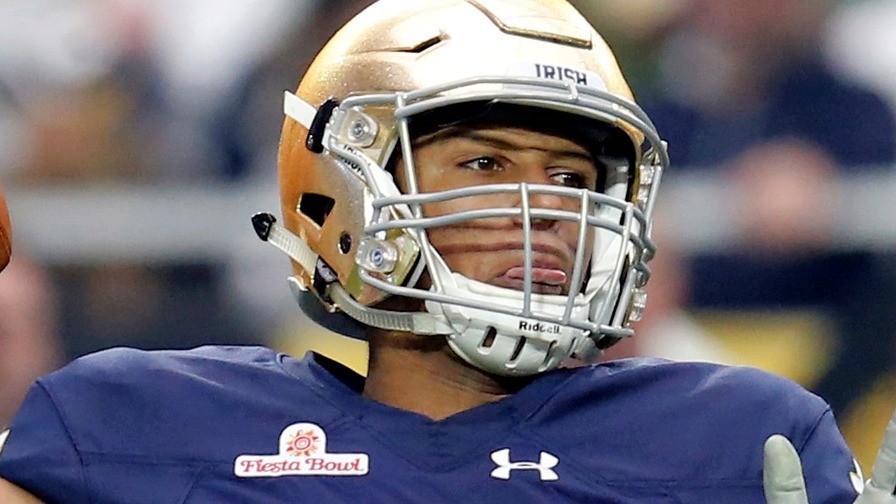Who Should Be Notre Dame's Starting Quarterback?

Some college football teams tend to have a problem finding a solid starting quarterback (see: Alabama Crimson Tide). Others tend to have a problem when it comes to fielding a decent backup quarterback, in case their starter would go down due to injury (See: Too many to name).
For schools like Texas A&M, Texas Tech and Oklahoma, they have a much easier time attracting (and grooming) top-rated quarterbacks. Unlike those three schools, Notre Dame isn't right in the breadbasket of college football recruiting. But they've had their fair share of quarterback battles in recent years.
This year is no different. And it might be the most interesting one we've seen in South Bend.
Malik Zaire, a 6'0" Senior, appeared in seven games in his Sophomore season before being handed the keys to the Irish offense at the start of the 2015 season. In the second game of the season, though, Zaire broke his ankle and missed the rest of the season.
That's when now 6'4" Junior, Deshone Kizer, stepped in as Notre Dame's starter. The 20-year-old went on to start the remaining 12 games, which included a loss to Ohio State in the Fiesta Bowl.
With a healthy Zaire and a more experienced Kizer at his disposal, what should head coach Brian Kelly do?
While it's been reported that both Kizer and Zaire will play in their first matchup of the year with Texas, the numbers suggest that the answer to who will start is fairly simple.
Passing
| Passing | Comp % | Y/A | TD | INT | Rating |
|---|---|---|---|---|---|
| Malik Zaire | 62.7 | 9.3 | 5 | 0 | 162.4 |
| DeShone Kizer | 62.9 | 8.6 | 21 | 10 | 150.1 |
For the most part, the two are almost identical in passing results, in and of itself. Their completion percentage and yards per attempt are not so easily distinguished.
Their passer efficiency ratings aren't so similar. Zaire's career rating suggests that he is a little better than the younger Kizer, especially when you take into account his 10.6 adjusted yards per attempt (in comparison to Kizer's 8.5 rate).
In case you were wondering, yards and touchdowns per game wouldn't tell us much because each player has had at least one partial game under his belt. And as for touchdown and interception totals, we'll arrive at that point momentarily.
Rushing
| Rushing | Yds | Avg | TD |
|---|---|---|---|
| Malik Zaire | 290 | 5.6 | 2 |
| DeShone Kizer | 525 | 3.9 | 10 |
It's probably easy to guess which of these two signal-callers is the better runner just by their body type, but if that doesn't do the trick, watching will.
It's true that Kizer is a great downhill runner, especially in the red zone, where he tallied 10 scores a season ago. Nevertheless, it's plain to see that Zaire's superior yards per rush tell us that he has the ability to go east and west in addition to north and south.
His shaking and baking is what gives him the edge in pure rushing ability -- at least, everywhere but the red zone.
The Deciding Factor
So, by efficiency, Zaire has a slight advantage in both passing and rushing. With that in mind, while also taking into account Kizer's younger and ability to develop, this thing is deadlocked. That is, if you stop at efficiency.
But, as I alluded to above, it's also about volume.
We know that each of these guys has the ability to ball out -- there's no question about that. But, as counter-intuitive as it may be, we know a lot more about Kizer than we do Zaire to this point.
Kizer has played (and started) in more games than the elder Zaire and, more importantly, he's ran a lot more plays, threw many more passes (259, to be exact) and has stayed healthy despite 83 more rushing attempts.
The Junior is a proven commodity even though he has the ability to grow into much more than we've seen thus far (which is impressive to boot).
Until further notice, the Golden Domers need to roll with #14.
















